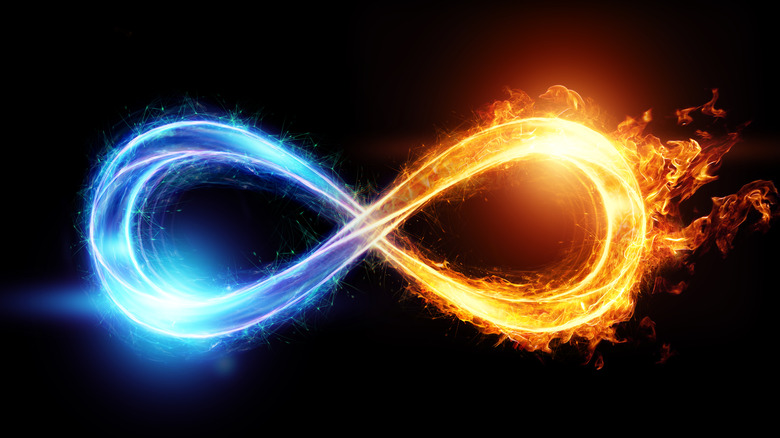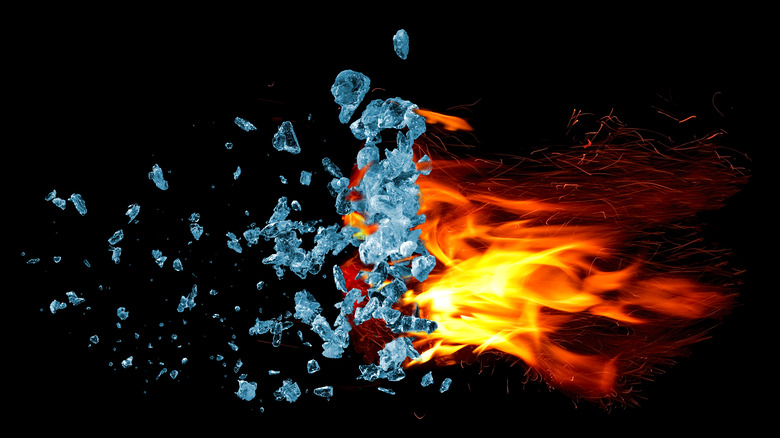The Science Behind Starting A Fire With Ice
In early prehistoric times, stone, metal, and wood were largely used to strike a flame (via CORE). Modern inventions like matches and lighters made it easier to start a fire. To keep warm in harsh winters during mountaineering expeditions, cook food in camps, or fend off wild animals during jungle stays and treks, adventure lovers later "invented" unique ways to light up a fire. From oranges and crayons to potato chips and steel wool, many unusual fire-starting tools have been known to come to the rescue in emergencies (via Bushgear).
While dry ice in fire extinguishers and water in fire brigades are often used to douse flames, is it possible to ignite a fire with regular ice? Well, it is true and ironic that at the same time that water smothers fire, ice can be used to start it.
Making fire with ice is easier than you think
The magnifying glass, a convex lens, is often used to read small letters and make objects or photos appear larger. According to ABC News, astronomers recently used a "cosmic magnifying glass" to detect a Jupiter-like planet in the Milky Way. In our growing-up years, some of us could successfully learn to use a magnifying glass in a scientific yet fun way and show our friends how to start a fire without matches.
"When (light) hits a curved surface, that can cause the light rays to become concentrated, and that can cause a fire. That's how a magnifying glass works," Nicole Moore, an assistant professor of physics at Gonzaga University, told The Spokesman-Review.
Interestingly, the same principle applies if you need to start a fire with ice. According to HuffPost, all you need is a clear disc-shaped piece of ice, dry tinder, and sunlight to create the magic. If you are stuck on a campsite in freezing temperatures, you may also need a sharp knife to help you carve out a giant mass of ice from a nearby frozen lake.
How to start a fire in a genius way
When water is converted to ice, water molecules freeze and form a regular crystalline lattice. The crystal structure is hexagonal and has hydrogen bonding (via CORE). According to ThoughtCo, fire is a mixture of carbon dioxide, water vapor, oxygen, and nitrogen. Since the clear disc-shaped ice acts as a magnifying glass, it can capture the sun's heat and concentrate the beam of sunlight onto a focal point. If the focal point is on dry leaves, paper, wood, or anything flammable, it can set afire quickly, per Listverse.
According to PBS, it is essential to make a fat ice lens with a short focal length. Thin lenses with a longer focal length can create a focal blur instead of a focal point, and either delay or deny the object from going up in flames. PBS further states that the ice must be clear. If the ice contains bubbles or is cracked, the light passing through it may scatter and prohibit it from acting as a magnifying glass.


